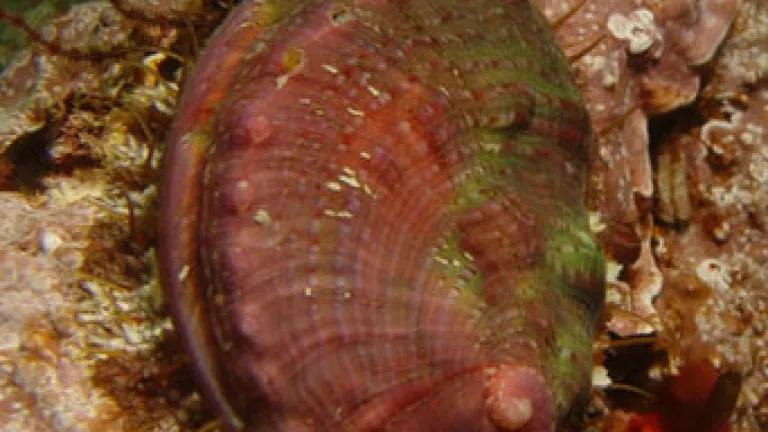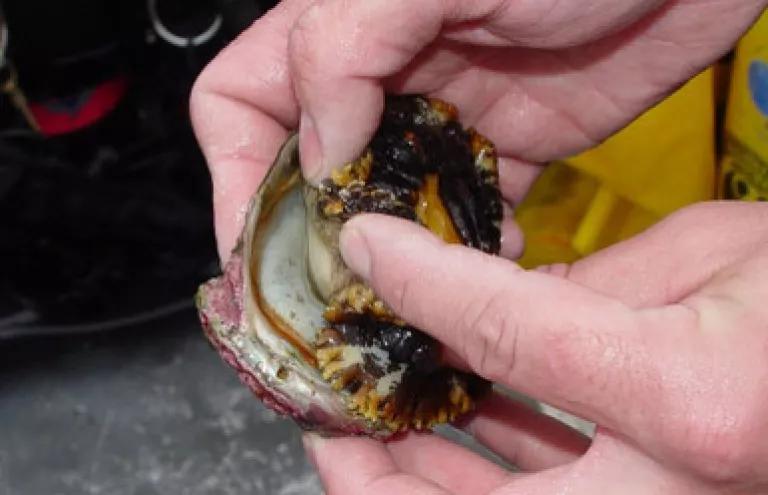
In June, NRDC submitted a petition to the National Marine Fisheries Service to list the pinto abalone as “endangered” under the Endangered Species Act. (In August, the Center for Biological Diversity submitted a similar petition.) Monitoring shows populations
of the species have declined by 80-99 percent. In many areas, the decline occurred after
the closure of pinto abalone fisheries. NMFS announced today that the ESA listing may be warranted. Over the next 8 months, the federal agency will conduct a full scientific review of the pinto abalone’s status before deciding whether to formally propose a listing under the Endangered Species Act.
This step forward is great news for pinto abalone and for people who care about this member of one of the west coast’s iconic animal families. Pinto abalone has the broadest range of the seven North American abalone species, inhabiting coastal waters from Baja California to Alaska. This large marine snail, which can grow up to eight inches and live up to 50 years, gobbles algae creating habitat on the rocky shorelines where creatures like sea urchins and periwinkles can cling. But the abalone isn’t only useful to other sea life; in the past, pinto and other abalone have provided a living for those who braved pounding ocean surf to pry the gastropods off rocks. The meat of wild abalone, pounded thin and sautéed in butter, has been a sought-after delicacy in restaurants from San Diego to Sitka. The pinto abalone shell, which can reach salad plate size, has a spectacular iridescent interior. Pinto abalones are also food for other species, such as endangered sea otters, crab and octopus.
Pinto abalone numbers first dwindled due to overharvesting by both commercial and recreational fisheries. Today, the one-two punch of climate change and ocean acidification, combined with continued illegal poaching, is driving this species toward extinction. The species reproduce by what’s called “broadcast” spawning, by which adults cluster together and release their sperm and eggs into the water. This reproductive strategy obviously depends on a certain density of animals to succeed. In some areas, such as coastal waters off the State of Washington, scientists have declared the species ‘functionally extinct.’ Without immediate, active intervention, there’s almost no hope of saving the pinto abalone.

An endangered species listing is our best hope for protecting this beloved species while there is still time to rebuild populations. But this listing is not guaranteed. Now is the time for all of us to weigh in and encourage the federal government to protect the pinto abalone. The National Marine Fisheries Service is soliciting comments, identified by “NOAA-NMFS-2013-0158,” from the public by any one of the following methods:
Electronic Submissions: Submit all electronic comments via the Federal eRulemaking Portal here. To submit comments via the e-Rulemaking Portal, first click the “submit a comment” icon, then enter “NOAA-NMFS-2013-0158” in the keyword search. Locate the document you wish to comment on from the resulting list and click on the “Submit a Comment” icon on the right of that line.
Mail or hand-delivery: Protected Resources Division, West Coast Region, NMFS, 501 West Ocean Blvd., Suite 4200, Long Beach, CA 90802-4213.
I am hopeful that together we can save this west coast treasure.
**Images courtesy of the Alaska Department of Fish and Game.**

